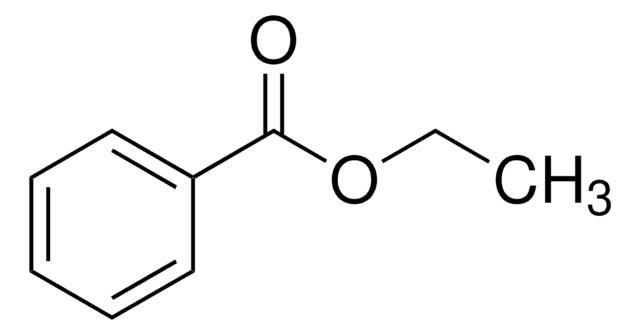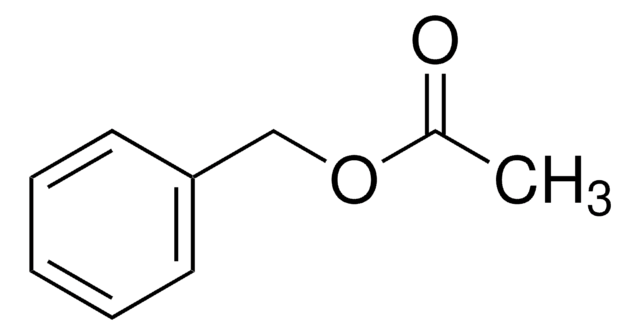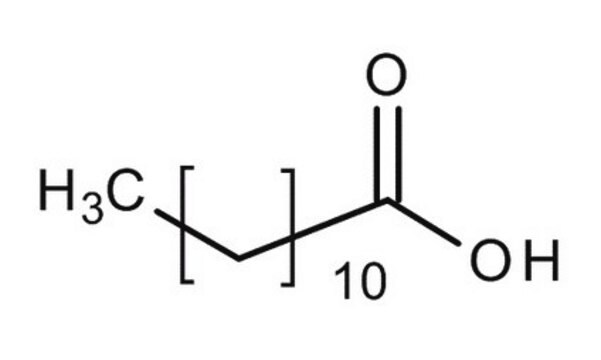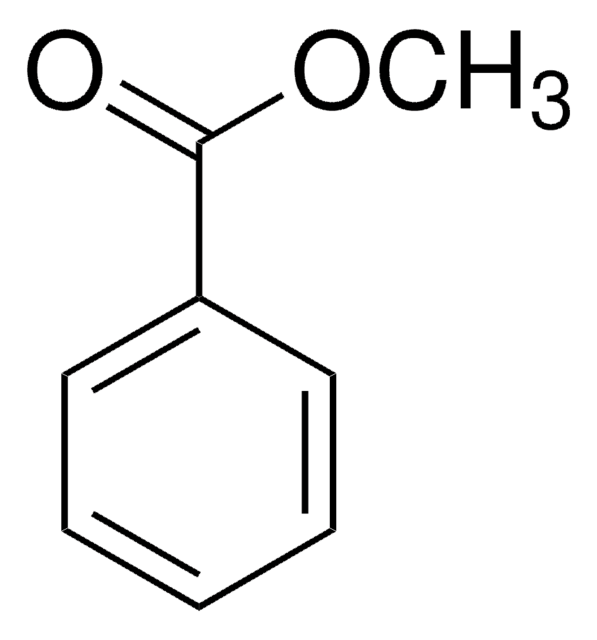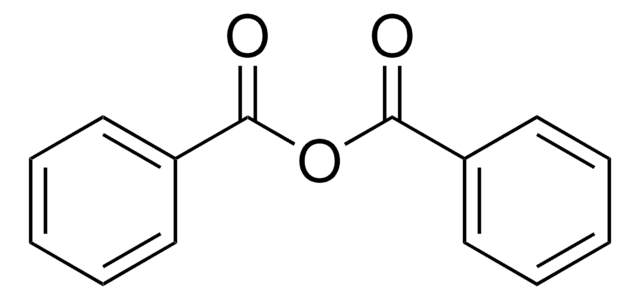72505
Ethyl benzoate
analytical standard
About This Item
Prodotti consigliati
Grado
analytical standard
Livello qualitativo
Densità del vapore
5.17 (vs air)
Tensione di vapore
1 mmHg ( 44 °C)
Saggio
≥99.0% (GC)
Temp. autoaccensione
914 °F
Durata
limited shelf life, expiry date on the label
tecniche
HPLC: suitable
gas chromatography (GC): suitable
Impurezze
≤0.5% water
Indice di rifrazione
n20/D 1.504 (lit.)
n20/D 1.504-1.506
P. eboll.
212 °C (lit.)
Punto di fusione
−34 °C (lit.)
Densità
1.045 g/mL at 25 °C (lit.)
applicazioni
cleaning products
cosmetics
flavors and fragrances
food and beverages
personal care
Formato
neat
Stringa SMILE
CCOC(=O)c1ccccc1
InChI
1S/C9H10O2/c1-2-11-9(10)8-6-4-3-5-7-8/h3-7H,2H2,1H3
MTZQAGJQAFMTAQ-UHFFFAOYSA-N
Cerchi prodotti simili? Visita Guida al confronto tra prodotti
Descrizione generale
Applicazioni
- Japanese soy sauce by headspace solid-phase microextraction-aroma extraction dilution analysis-gas chromatography-olfactometry (HS-SPME-AEDA-GC-O) as well as GC combined with mass spectrometry (GC-MS).
- Honeybush tea (Cyclopia spp.) by HS-SPME and comprehensive two-dimensional gas chromatography (GC x GC) with time-of-flight mass spectrometry (TOFMS).
- Cherry wine samples by HS-SPME coupled to GC-MS equipped with electron impact (EI) ionization, and selective ion monitoring (SIM) detection.
- Monstera diliciosa fruits by HS-SPME-GC with quadrupole EI-MS.
Codice della classe di stoccaggio
10 - Combustible liquids
Classe di pericolosità dell'acqua (WGK)
WGK 1
Punto d’infiammabilità (°F)
190.4 °F - closed cup
Punto d’infiammabilità (°C)
88 °C - closed cup
Scegli una delle versioni più recenti:
Possiedi già questo prodotto?
I documenti relativi ai prodotti acquistati recentemente sono disponibili nell’Archivio dei documenti.
I clienti hanno visto anche
Il team dei nostri ricercatori vanta grande esperienza in tutte le aree della ricerca quali Life Science, scienza dei materiali, sintesi chimica, cromatografia, discipline analitiche, ecc..
Contatta l'Assistenza Tecnica.